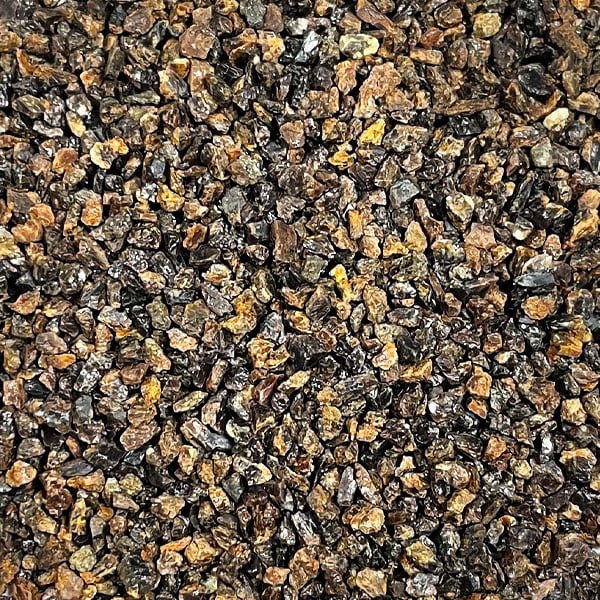GARNET, HARD ROCK

Description:
The high bulk density and Mohs hardness of Hard Rock Garnet is ideal for quickly cutting through thick coatings and producing deeper surface profiles. Being a mined mineral, Hard Rock Garnet naturally has low chloride levels, reducing the risk of surface contamination. Hard Rock Garnet is non-metalic and will not leave a residue to interfere with coatings, and is virtually free of embedment.
Common Uses:
- Manufacturing/Maintenance
- Bridges, pipelines, oil refineries, rail yards
- Ship yards, storage tanks, water towers
- Blast Rooms/Blast Yards
Documents:
- Did You Allredi Know - Abrasives
- Abrasives Application Guide - 404M044
- Air and Abrasive Consumption Chart - 1091029
- Barton Garnet - SDS
- Barton Blasting Abrasives Performance Applications - Brochure
- GNP Graystar - Rockridge Garnet - SDS
- GNP Graystar - Rockridge Garnet - TDS
- Vampire Abrasives Hard Rock Garnet - SDS
Physical Characteristics
Shape: Angular
Hardness: 7-8 Mohs
Bulk Density: 130-150 lbs./cu.ft.
Specific Gravity: 4.0-4.1 g/cc
Free Silica: Less than 0.5%
Total Chlorides: Less than 0.5 ppm
Type: Mined Mineral
Recyclability: Medium
Surface Etching: Medium
Packaging Options
Bags: 50 lbs., 3000 lbs.
Recommended Blasting Conditions
Nozzle Pressure: 90–110 psi
Working Distance from Surface: 18–36 inches
Inhaling dusts from abrasive blasting may result in serious injury, disease, or death.
According to OSHA, only a Type CE NIOSH-certified blasting airline respirator with positive pressure blasting helmet should be used for abrasive blasting.
OSHA® Fact Sheet: Protecting Workers from the Hazards of Abrasive Blasting Materials
